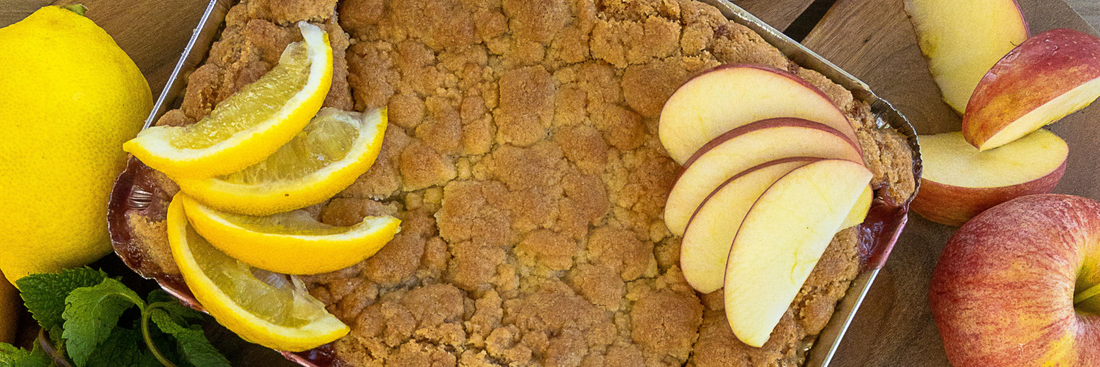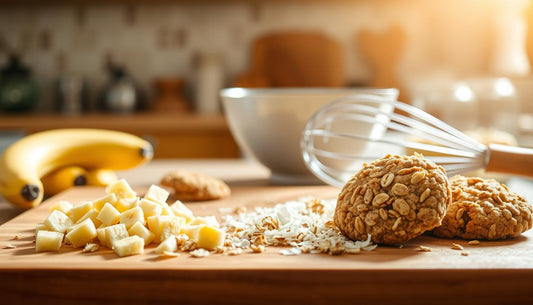Few desserts hold as much nostalgia, symbolism, and cultural weight as the apple pie. Its golden crust and comforting aroma represent family gatherings, craftsmanship, and the universal joy of sharing good food.
But behind this beloved dessert lies a fascinating global story one that spans centuries, continents, and culinary evolution. Let’s take a journey through the history of apple pie, from its medieval beginnings to its modern-day status as a worldwide symbol of warmth and comfort.
- Apple Tart Recipe: A Classic French Dessert You Can Master at Home
- Apple Pie Meaning: Symbolism & Cultural Significance
- Apple Cookies: A Simple Homemade Dessert with Fresh Apples
The Origins: Apple Pie Before America

Despite being synonymous with American culture today, apple pie did not originate in the United States. The earliest known recipes date back to 14th-century Europe, particularly England and the Netherlands.
Medieval Roots
In the 1300s, English cooks were already preparing “pye” a dish that enclosed fruits or meats inside pastry crusts. These early pies often used apples, figs, raisins, and pears mixed with spices like saffron and cinnamon. However, sugar was rare and expensive, so the sweetness came primarily from dried fruits.
A famous early reference appears in the “Forme of Cury”, a royal English cookbook compiled during the reign of King Richard II. This ancient manuscript includes a recipe for “Appleys in Coffyn,” a baked apple pie without sugar or crust glaze.
Dutch Influence
The Dutch were equally influential in shaping the dessert we know today. Their version the “Appeltaart” was baked in a deep dish and featured a lattice crust, raisins, and lemon zest. Dutch settlers later brought this baking style to North America, helping evolve the pie into its iconic form.
How Apples Traveled the World
Interestingly, apples themselves are not native to North America. They originated in Central Asia, in the mountains of Kazakhstan. From there, traders carried them along the Silk Road to Europe, where they were cultivated widely.
When European colonists arrived in the Americas, they brought apple seeds and saplings with them. By the 17th century, apples had become a staple crop in colonial farms, leading naturally to the adaptation of apple pie recipes using local ingredients.
Apple Pie in Early America
The American version of apple pie began forming in the 1600s and 1700s, as settlers combined Old World recipes with New World ingredients.

Colonial Innovation
Sugar was still a luxury item in early America, so many early apple pies were sweetened with maple syrup or molasses. Cinnamon, nutmeg, and clove became common spices, reflecting both European influence and local adaptation.
Becoming a Symbol of Prosperity
By the 18th and 19th centuries, the apple pie had become a symbol of domesticity and abundance. It was featured in household cookbooks, often described as a mark of a skilled homemaker.
An 1869 newspaper famously claimed:
“No pie-eating people can be permanently vanquished.” This line would later echo into American culture as part of the patriotic slogan: “As American as apple pie.”
The Apple Pie Boom: Industrialization & Accessibility
The late 19th and early 20th centuries brought massive changes to the way food was produced and enjoyed. Industrialization made ingredients cheaper, ovens more consistent, and mass baking possible.
Commercial Bakeries and Canning
Apple pie fillings began to be sold commercially in cans, allowing bakeries to produce pies more efficiently. This shift transformed apple pie from a homemade delicacy into an everyday comfort food accessible, affordable, and consistent.
Apple Pie in the 20th Century
During both World Wars, apple pie became a symbol of home and patriotism. Soldiers and citizens alike used it to represent the comforts of family and the values of simplicity and kindness.
By the 1950s, no American diner menu was complete without a slice of warm apple pie served with vanilla ice cream a pairing still loved today.

Apple Pie Around the World
Though the United States popularized the dessert globally, apple pie has different cultural interpretations across regions.
United Kingdom
Traditional British apple pies often use tart cooking apples like Bramley. They’re served hot with custard or clotted cream, emphasizing a creamy contrast to the tart filling.
Netherlands
The Dutch “Appeltaart” remains one of Europe’s oldest continuous pie traditions, filled with cinnamon apples, raisins, and a crumbly lattice crust.
France
The French version, the Tarte Tatin, flips the concept caramelized apples baked beneath pastry, then inverted before serving. It’s luxurious, elegant, and slightly bittersweet.
Canada
Canadian apple pies often integrate local twists such as maple syrup, cheddar cheese toppings, or butter pastry crusts. Regional bakeries continue to celebrate it as part of Canadian autumn cuisine.
The Cultural Symbolism of Apple Pie
The apple pie’s meaning extends beyond the kitchen. It represents home, tradition, family, and identity.
“As American as Apple Pie”
This phrase, popularized during World War II, encapsulated national pride and cultural unity. Apple pie became shorthand for comfort and belonging.
In Modern Culture
Movies, literature, and advertisements have used apple pie to evoke nostalgia and wholesomeness. Yet in today’s diverse culinary world, the dish has evolved — embraced by chefs across cultures who reinterpret it with new spices, techniques, and presentations.
The Evolution of Apple Pie in Modern Cuisine
Today’s apple pies blend tradition with innovation. Chefs experiment with:
- Artisan crusts made from alternative grains
- Global spices like cardamom or star anise
- Modern plating that reimagines the pie as deconstructed desserts
- Mini pie servings ideal for cafés and events
Even in these creative interpretations, the spirit of the original pie remains warm, spiced, and comforting.
For bakeries and cafés, showcasing your apple pie beautifully matters as much as the flavor itself. A well-crafted apple pie box enhances both presentation and freshness connecting tradition with professionalism.
Apple Pie and Canadian Bakery Culture
In Canada, apple pie has become a year-round staple a centerpiece of Thanksgiving tables, bakery displays, and café dessert menus.
Bakeries emphasize natural ingredients and rustic presentation, often pairing slices with ice cream or cheddar cheese. The dessert bridges European heritage with Canadian creativity, making it one of the country’s most loved pastries.
Kimecopak supports this legacy by offering packaging that helps bakers maintain freshness, presentation, and environmental responsibility essential for businesses that value both heritage and sustainability.
Explore our full range of eco-friendly pie boxes and bakery packaging to complement your dessert creations.
FAQs About the History of Apple Pie

Where did apple pie originate?
Apple pie originated in Europe, particularly England and the Netherlands, during the Middle Ages.
Why is apple pie associated with America?
It became an American cultural symbol in the 19th and 20th centuries, representing home, family, and national pride.
What is the oldest known apple pie recipe?
The earliest recorded recipe appears in a 14th-century English cookbook, Forme of Cury.
What’s the difference between American and British apple pies?
American versions are sweeter, often served with ice cream, while British ones are tarter and paired with custard.
What makes apple pie so iconic?
Its timeless blend of warmth, spice, and simplicity along with its cultural symbolism make apple pie one of the world’s most recognizable desserts.
Conclusion
The story of apple pie is a story of migration, innovation, and emotion. From ancient European kitchens to modern bakeries across Canada, it remains a dessert that unites generations and cultures.
At Kimecopak, we celebrate that heritage by helping bakeries and food brands deliver pies with packaging that honors their craft eco-friendly, beautiful, and built to perform.







